Among Rolex’s new releases at Watches & Wonders 2021, the vintage-look Explorer and updated Explorer II claimed most of the spotlight, but the Swiss mega-brand launched several other noteworthy timepieces alongside them. These include an all-new version of its iconic, motorsport-styled sport chronograph, the Oyster Perpetual Cosmograph Daytona, whose dial is literally out of this world.
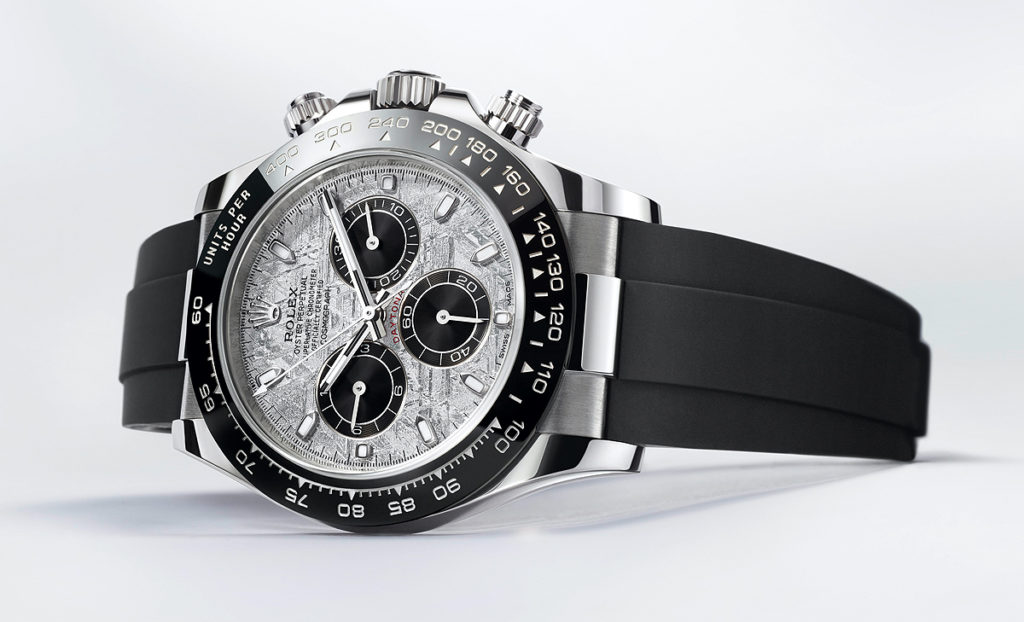
The new model, in an 18k white gold case and sporting an intriguingly textured dial made of metallic meteorite, continues the legacy of the Daytona collection, which began back in 1963 with the first Rolex Cosmograph, made for race car drivers, and now bears the name of the world-famous Daytona Racetrack. The meteorite material of the dial is derived from the remnants of an asteroid, composed primarily of iron and nickel, which exploded millions of years ago and subsequently cooled to create distinctive, interwoven crystallized surface patterns. These so-called “Winmanstatten patterns” are unique to each dial, impossible to replicate, and sealed with a special chemical treatment. The three black counters of the Daytona dial provide a pop of contrast with the silvery metallic main dial, while white-gold hands tell the time on applied hour markers of the same precious metal; both hands and markers are treated with Rolex’s proprietary Chromalight substance for a long-lasting nighttime glow.
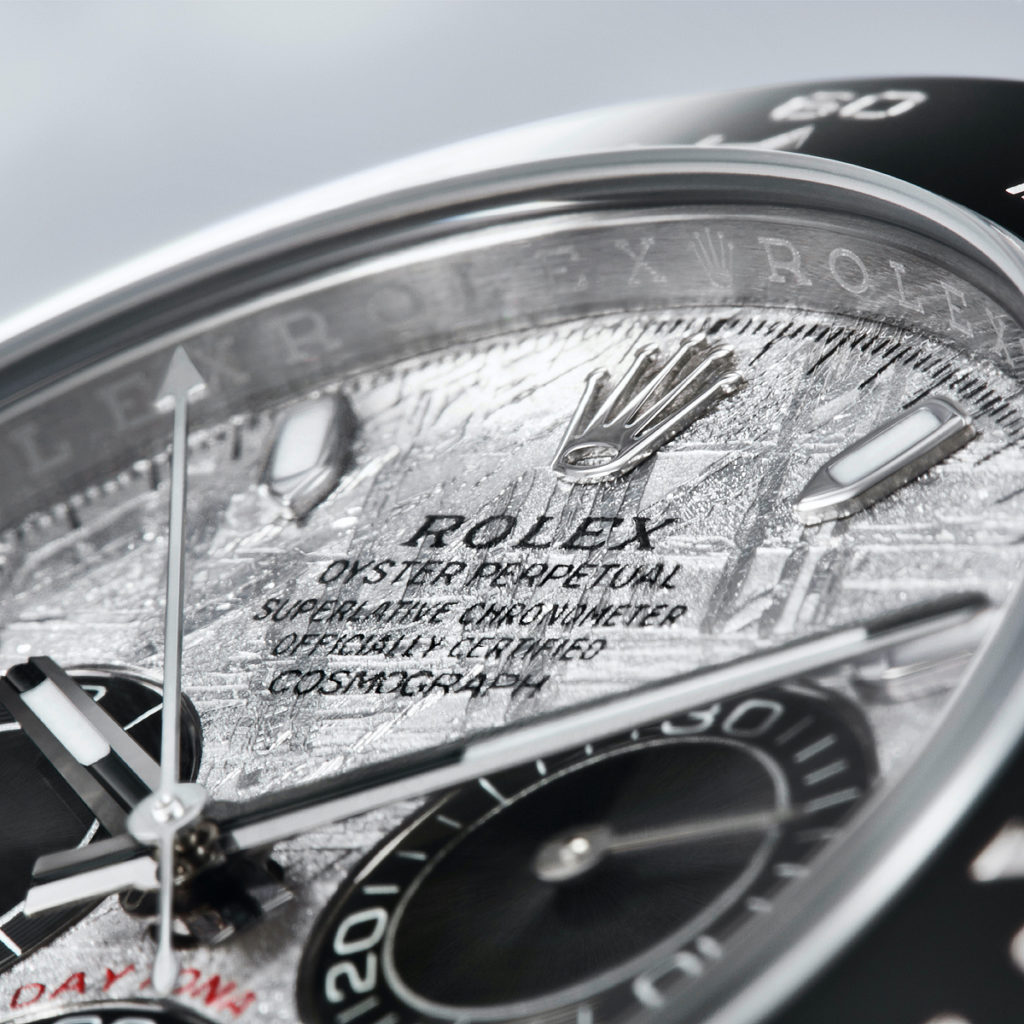
The case middle is made of a single block of 18k white gold while the hallmark tachymeter bezel is built from Cerachrom, a durable, virtually scratchproof material patented by Rolex that is exceptionally resistant to both corrosion and UV rays. The numerals on the bezel’s scale are applied through a special process in which the graduations are first molded in ceramic before it is fired at 1,500° C, then coated with a thin layer of platinum via PVD (Physical Vapor Deposition). The bezel is made from a single monobloc of the Cerachrom material and holds the crystal firmly in place on the middle case, helping to ensure the Oyster case’s 100-meter (330-feet) water resistance. Also aiding in this task are the crown, with its Triplock water resistance system, and the chronograph pushers, all of which screw down securely into the case.
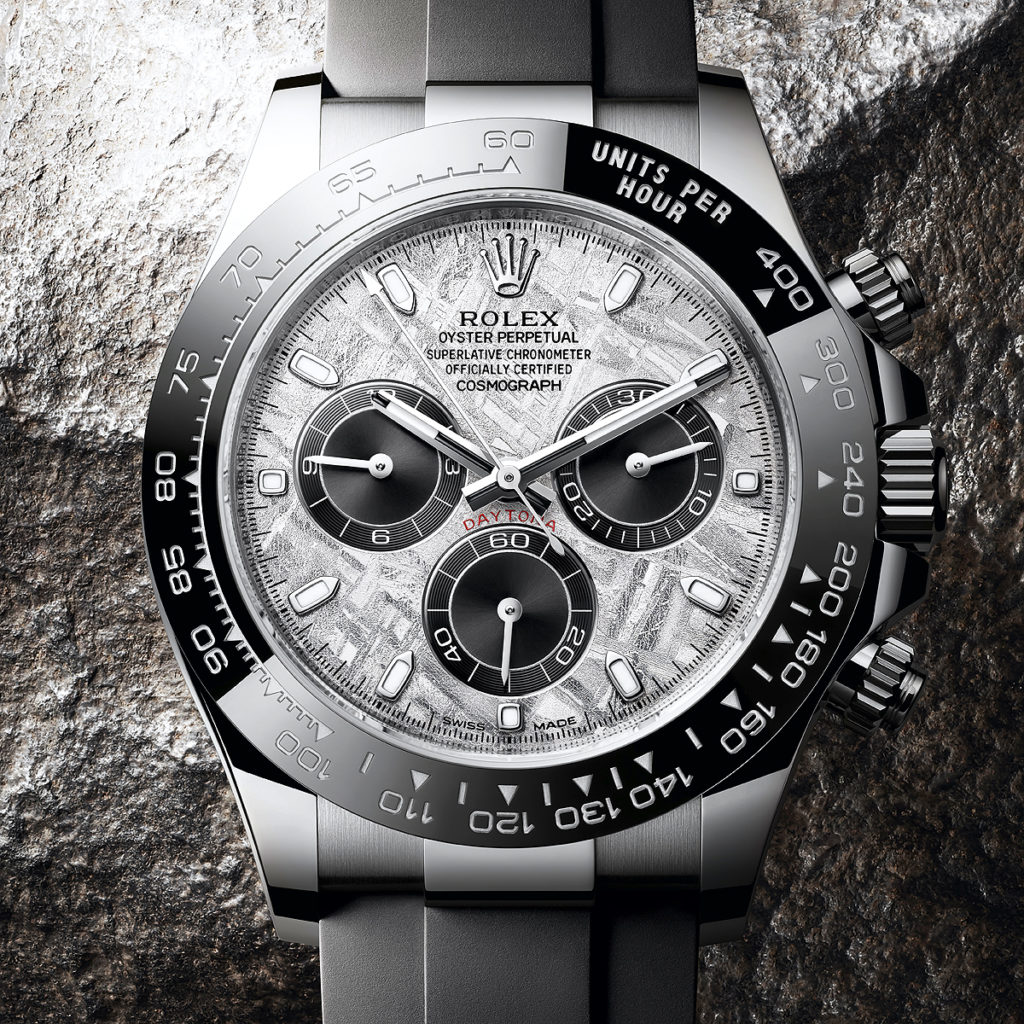
Ensconced behind a hermetically screwed down caseback — which allows access only to Rolex watchmakers with a special tool — is Rolex’s manufacture Caliber 4130, a self-winding, COSC-certified column-wheel chronograph movement with a vertical clutch, a bidirectional (“Perpetual”) rotor on a ball bearing. Its oscillator includes a hairspring made of blue Parachrom, another Rolex-exclusive, patented material that is especially resistant to magnetic fields. Hairsprings made of Parachrom, an alloy of niobium, zirconium, and oxygen, are said to remain stable through temperature variations and be much less susceptible to shocks, making them 10 times more precise in case of shocks than a traditional hairspring. The movement carries Rolex’s in-house “Superlative Chronometer” certification for precision and robustness and stores a power reserve of 72 hours.

Yet another Rolex patented element is the watch’s black Oysterflex bracelet, That’s right: Rolex calls it a bracelet, not a strap, though at first look it very much resembles a more-or-less traditional rubber strap. Its overmoulded black elastomer exterior covers an interior made up of flexible metal blades from a titanium-nickel alloy and “longitudinal cushions” for enhanced comfort. The result, says Rolex, is a wristband with suppleness and comfort of a strap and the durability and stability of a bracelet. The Oysterflex bracelet is also equipped with the brand’s Easylink extension for adjusting its length and an Oysterlock safety clasp for secure fastening.
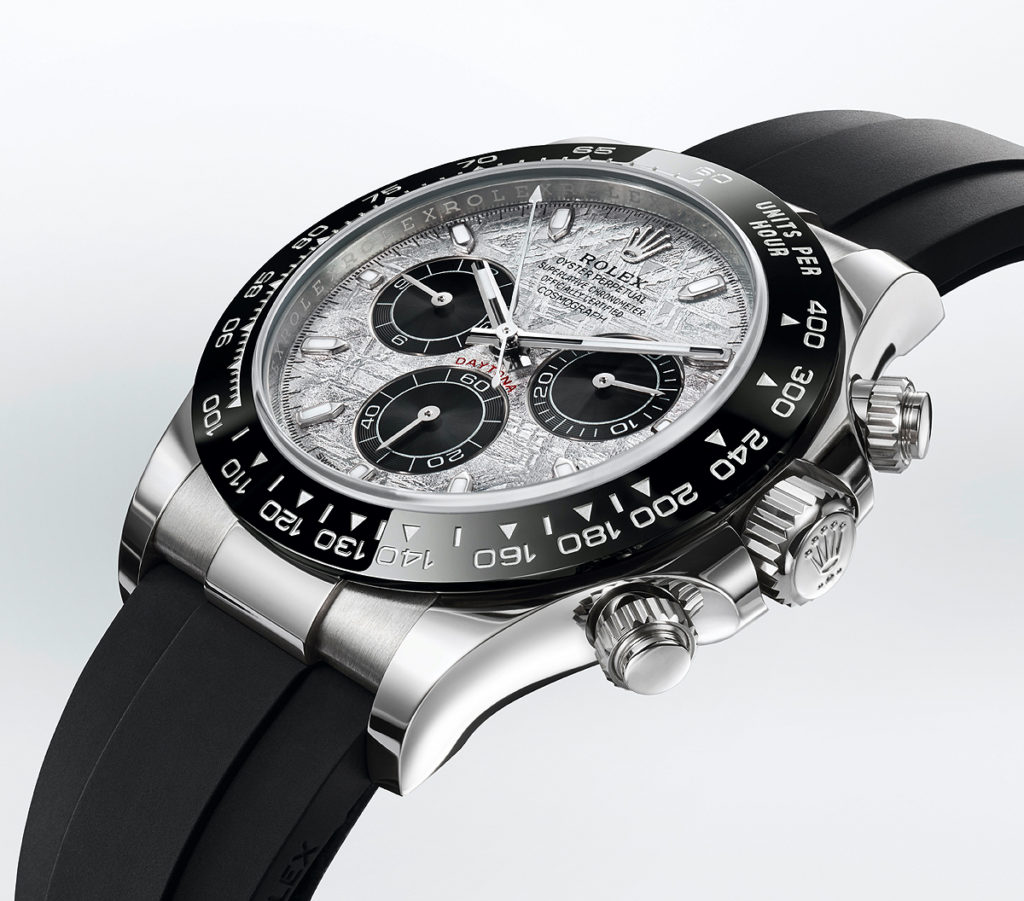
The Rolex Oyster Perpetual Cosmograph Daytona the white-gold case with meteorite dial and Oysterflex bracelet is priced at $34,050. Rolex is also offering two other versions of the watch with meteorite dials, one in 18k yellow gold ($41,000), the other in 18k Everose gold ($43,700), both with engraved gold tachymeter bezels rather than Cerachrom ones and both mounted not on Oysterflex straps but on classical Oyster bracelets in matching precious metal.
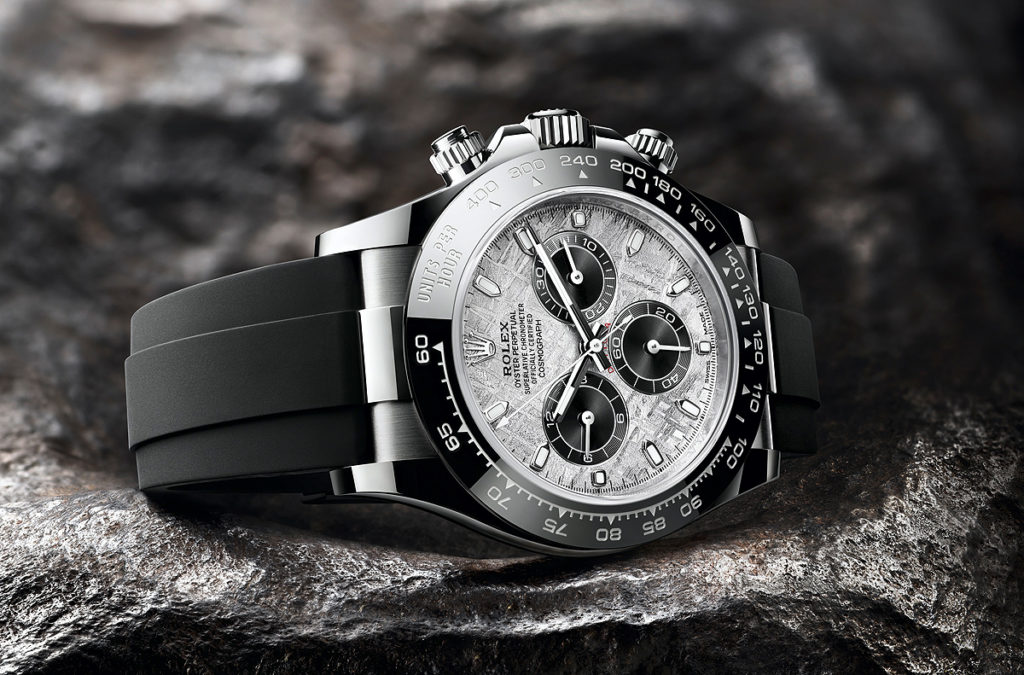

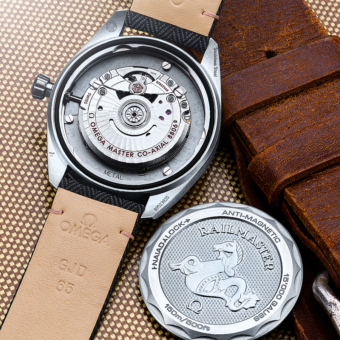
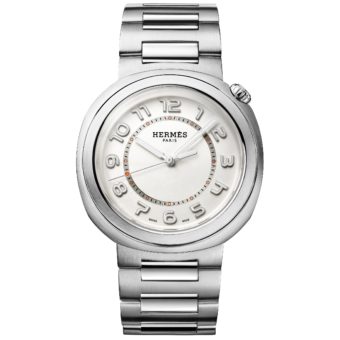
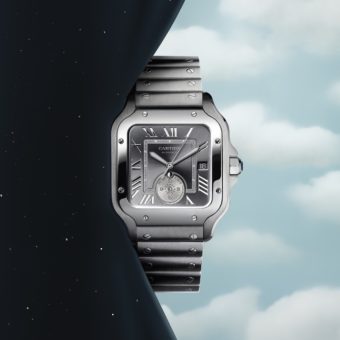
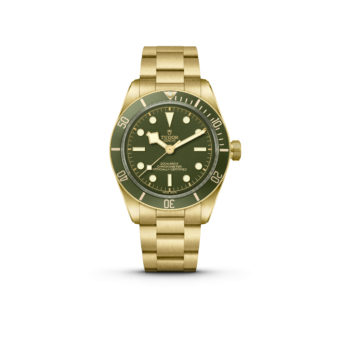
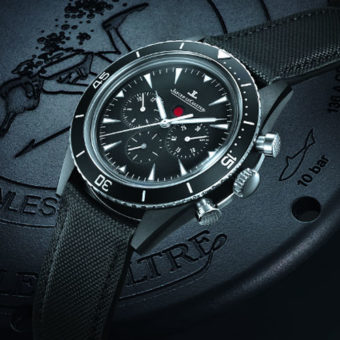
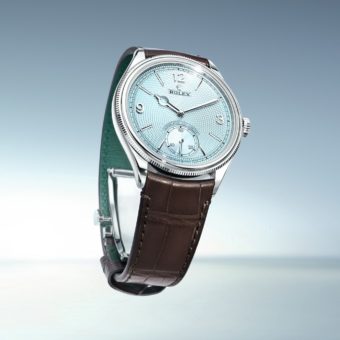
Very beautiful watch, good investment.
Really gorgeous. Love it
A great watch to add to the overall collection
Brad, Google Rolex meteorite for other models; a few other makers (Omega) with meteorite dials as well.
Interesting material for personal items: i collect custom pens + pocket knives as well, and meteorite makes for a very interesting + unique item!
I am keen to buy but can’t even get into the queue to buy here in Malaysia ! Any suggestion?!
While I’ve never been a big chronology guy, I’m pretty much done with the hyper hyped Daytona. A fine watch, but a basic, if tried and true movement, same case and dial design for decades, a strip of ceramic to set hearts atwitter, and about as accessible as front row seats at a Royal wedding. Now Rolex is just tinkering with accessories.
4/24/21 Saturday
Any other Rolex styles with the meteorite face?
I will buy if you offer different styles other than the Dayton’s.
The Daytona is the only model I did not have in my collection. The meteorite face and wristband is unique. I must have it!
Love these meteorite dials from Rolex. It seems to me that Rolex have taken a leaf out of Grand Seiko’s book and started to concentrate on making their dials really special…Either way it’s a fantastic move by Rolex.